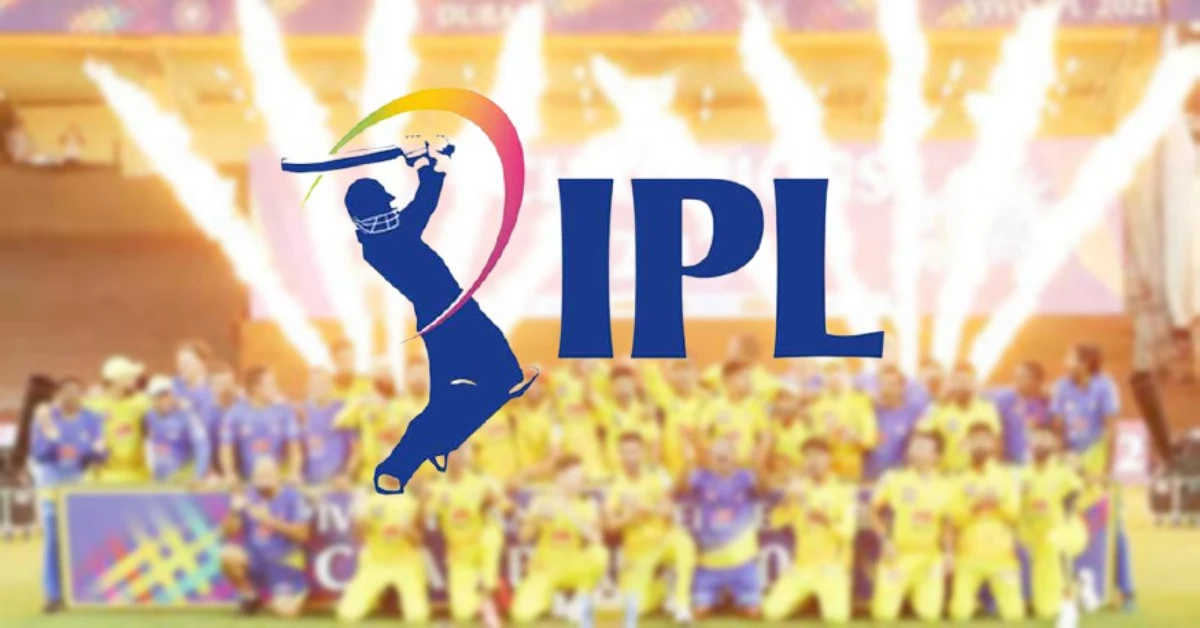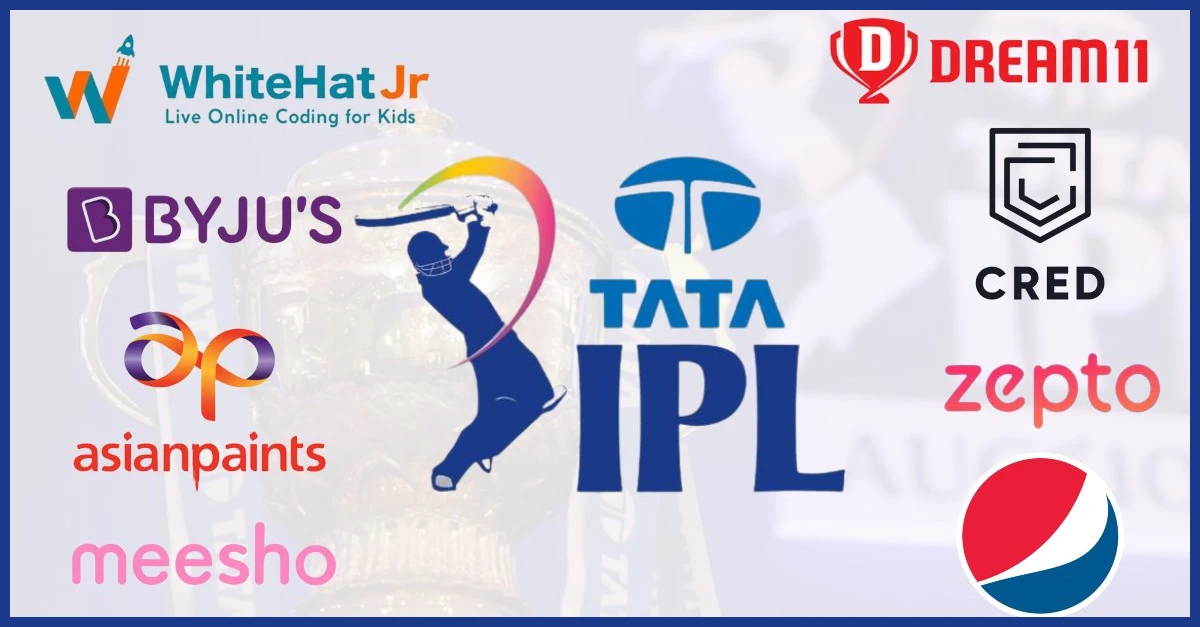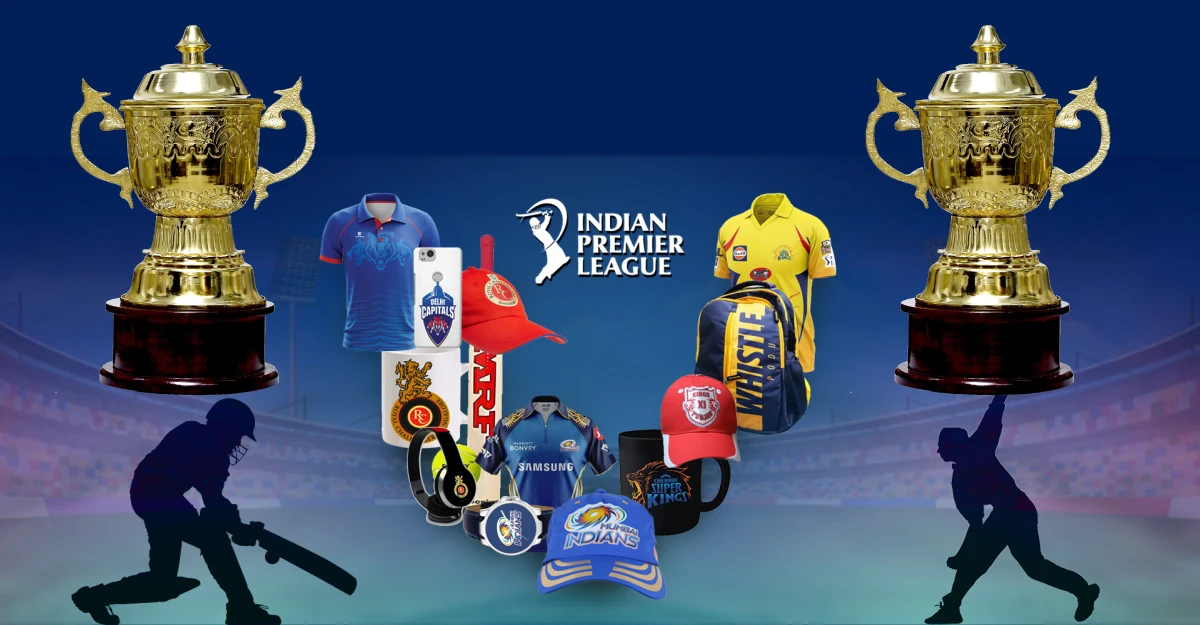Ever since 2008, IPL has become one of the most notable events in the Indian cricket world! Its popularity has risen so massively that Indians wait for IPL every year as if it were a festival. After all, it brings a whole new bunch of excitement, entertainment, and revenue through the on-field play.
Now, here comes a million-dollar question- How IPL teams earn money? Through ads and merchandise? True, but that’s not all. It is a long list! All thanks to the business model of IPL (Indian Premier League).

In this write-up, we will discuss the major revenue sources of IPL teams. So, without any delay let’s begin the discussion on- How IPL teams earn money!
Keep reading!
(A) What is IPL?
The Indian Premier League (IPL), also known as the TATA IPL due to sponsorship reasons, is an annual men’s Twenty20 (T20) cricket league held in India. Established by the Board of Control for Cricket in India (BCCI) in 2007, the IPL features competition among ten city-based franchise teams.
Typically scheduled between March and May, the IPL holds an exclusive window in the ICC Future Tours Programme, resulting in fewer international cricket tours during its seasons.
Renowned as the most popular cricket league globally, the IPL earned the sixth position in average attendance among all sports leagues in 2014. In a groundbreaking move, the IPL became the first sporting event to be broadcast live on YouTube in 2010.
Let’s have a brief overview of IPL (Indian Premier League)-
| Name of the Sports | IPL (Indian Premier League) |
| Countries | India |
| Administrator | Board of Control for Cricket in India (BCCI) |
| Headquarters | Cricket Centre, Churchgate, Mumbai, Maharashtra |
| Format | Twenty20 |
| First Edition | 2008 |
| Latest Edition | 2023 |
| Next Edition | 2024 |
| Tournament Format | Round Robin format with Group System and Playoffs |
| Number of Teams | 10 |
| Current Champion | Chennai Super Kings (2023) |
| Most Successful | Chennai Super Kings, Mumbai Indians (5 titles each) |
| Most Runs | Virat Kohli (7263) |
| Most Wickets | Yuzvendra Chahal (187) |
| Broadcasting in India | Star Sports (Television) JioCinema (Internet) |
The league’s success has paved the way for the establishment of other Indian sports leagues.
As of 2022, the IPL’s brand value soared to ₹90,038 crore (US$11 billion). According to the BCCI, the 2015 IPL season contributed ₹1,150 crore (US$140 million) to India’s GDP.
In December 2022, the IPL achieved a decacorn status with a valuation of US$10.9 billion, marking a remarkable 75% growth since 2020. The 2023 IPL final emerged as the most streamed live event on the internet, garnering 32 million viewers.
In 2023, the league entered a significant media rights deal for the period of 2023–2027, fetching US$6.4 billion from Viacom18 and Star Sports.
This valuation priced each IPL match at $13.4 million. With sixteen seasons completed as of 2023, the current champions are the Chennai Super Kings, securing victory in the 2023 season by defeating the Gujarat Titans in the final at the Narendra Modi Stadium in Ahmedabad.
(B) What is the business model of IPL?
The business model of the IPL is crafted around a distinctive blend of cricket, entertainment, and marketing strategies. These franchises, privately owned entities, operate under a revenue-sharing model.
Let’s have a brief look at the IPL business model-
| Aspects of the IPL Business Model | Description |
| Structure | Franchise system with ten teams representing different cities in India. |
| Ownership | Privately owned franchises operating independently. |
| Revenue Model | Operates on a revenue-sharing model where franchises benefit from league-wide revenue. |
| Revenue Sources | Broadcasting Rights, Sponsorship Deals, Merchandise Sales, Player Auctions, Player Endorsements |
| Competitive Format | Teams compete against each other in a league format, followed by playoffs and a final. |
| Global Appeal | Attracts international viewership and sponsorships due to its global fanbase. |
| Entertainment Factor | Integrates cricket with entertainment elements to enhance viewer experience. |
| Brand Building | Player endorsements and team branding contribute to the overall brand value of the league. |
Employing a franchise system, the league features ten teams representing diverse cities in India, each engaged in competitive matchups. We will look into the revenue sections in detail in the next section.
Note: Do you know how Dream11 earns money? If not, then go through the article “Dream11 business model explained- how does it work and make money?” You will get in-depth insights into it!
(C) Revenue Sources: How IPL Teams Earn Money?
The IPL teams’ revenue streams encompass broadcasting rights, sponsorship agreements, merchandise sales, player auctions, and player endorsements, collectively contributing to the financial vibrancy of the league.
(C.1) Media Rights
Media rights play a huge role in the Board of Control for Cricket in India’s (BCCI) financial game plan. In 2017, Star India made a colossal investment of 16,347 crores to snag the broadcasting rights for the Indian Premier League (IPL) for five years. Now, that’s a massive chunk of money! To break it down, it means about 60 crores for each IPL match.
Here’s the interesting part- these media rights aren’t hoarded by the BCCI; they share the wealth with all ten IPL teams. So, it’s like a financial party where everyone gets a slice of the broadcasting pie.
This teamwork ensures that the cricketing extravaganza stays exciting and financially robust for both the BCCI and the IPL teams. It’s not just about the game; it’s a win-win for everyone involved in the cricketing spectacle!
(C.2) Sponsorship

Sponsorship takes the spotlight as the absolute lifeline for Indian Premier League (IPL) franchises, constituting their most significant source of income. A glance at any IPL team’s gear reveals a vibrant tapestry of brand logos adorning every nook and cranny – from the emblem gracing the player’s jersey to the strategic placement on the boundary ropes.
These logos are not mere decorations; they represent lucrative partnerships, with brands shelling out substantial sums to showcase their names in the cricketing limelight.
Zooming in on the specifics, IPL franchises strike noteworthy sponsorship agreements with a diverse array of brands. Apparel companies, beverage giants, and even mobile phone brands step into the cricketing arena, contributing to the visual symphony of logos. These deals aren’t just about aesthetics; they’re about financial empowerment.
Let’s talk numbers.
These sponsorship agreements bring in a considerable amount of money for IPL franchises. This financial influx becomes instrumental in helping teams navigate and cover their multifaceted expenses effectively. It’s akin to a symbiotic relationship – brands gain visibility and recognition, while IPL franchises secure the financial backing they need to maintain their competitive edge.
So, the next time you witness an IPL match, it’s not just about the thrilling sixes and wickets on the field; it’s also about the strategic partnerships off the field that form the bedrock of financial stability for these cricketing entities.
The game is not just played in the stadium; it’s a business venture where sponsorships play a pivotal role in ensuring the show goes on, both on and off the pitch.
(C.3) Merchandise Sales

Beyond match tickets and sponsorships, IPL franchises tap into the lucrative realm of merchandise sales to fortify their financial standing. These savvy teams curate a spectrum of items, ranging from team jerseys to hats and an array of accessories, strategically positioning them as coveted souvenirs for ardent fans.
The meteoric rise in the IPL’s popularity has birthed a substantial surge in the demand for team-related merchandise. It’s not just about supporting a team during a match; it’s about embracing the ethos and identity that these franchises represent. Fans, driven by their passion for the game, willingly indulge in purchasing these items, creating a symbiotic relationship between their loyalty and the financial prosperity of the teams.
The revenue generated from merchandise sales doesn’t merely contribute to the bottom line; it reflects the resonance of the IPL brand in the hearts of cricket enthusiasts. Franchises leverage this demand, strategically pricing and marketing their merchandise to capitalize on the fervor surrounding the league. It’s a testament to the astute business acumen that complements the thrilling on-field action, adding another layer of commercial success to the captivating saga of the Indian Premier League.
(C.4) Selling Stake (Revenue Sharing)
The financial gains for IPL franchises extend beyond match-related revenue streams, including the substantial profits derived from the sale of team shares. A pertinent example is the case of Delhi Capitals, illustrating the transformative financial journey of IPL franchises. Back in 2008, the GMR company acquired this IPL team for a noteworthy sum of 84 million dollars.
Fast forward to 2018, and Jindal South West (JSW) entered the scene by securing a 50% share in the club for a staggering 77 million dollars.
It’s worth noting that the IPL operates on a revenue-sharing model, a pivotal mechanism ensuring that all franchises partake in the league’s financial prosperity. A significant contributor to this financial success is the sale of broadcasting rights.
The Board of Control for Cricket in India (BCCI) orchestrates these lucrative deals with various broadcasters, and the ensuing revenue is judiciously distributed between the BCCI and the individual franchises.
This equitable distribution of broadcasting revenue underscores the collaborative financial ecosystem that sustains the IPL and fortifies the financial positions of its constituent franchises.
(C.5) Ticket sales/gate revenue
Revenue from ticket sales stands as a pivotal and indispensable income source for Indian Premier League (IPL) clubs, constituting a substantial 15% of their overall revenue. The significance of this revenue stream is paramount, forming a cornerstone of financial stability for IPL franchises.
The intricacies of this revenue source involve the strategic setting of ticket prices by the team’s owners. This pricing model is a critical determinant in the financial equation, influencing the extent to which IPL franchises can depend on this revenue stream. It’s not just about the fans in the stands; it’s about the financial health of the entire team.
The distribution of the proceeds from ticket sales follows a nuanced pattern. A portion is allocated to sponsors and the Board of Control for Cricket in India (BCCI), while the majority finds its way into the team’s coffers.
This intricate revenue-sharing mechanism exemplifies the collaborative and interdependent financial framework that sustains the IPL ecosystem, where every ticket sold contributes not just to the electrifying atmosphere in the stadiums but also to the economic vitality of the respective franchises.
(C.6) IPL Price money

Prize money within the IPL serves as an additional financial stream for franchises, with awards contingent on their standings in the points table. The distribution of prize money is structured to reflect the competitive achievements of each team.
Taking the example of the VIVO IPL 2021, the Chennai Super Kings (CSK), triumphant in that edition, clinched the championship and were duly honored with a substantial prize of 20 crores.
Similarly, the Kolkata Knight Riders (KKR), securing the second position, earned a commendable prize of 12.5 crores. This allocation of prize money is emblematic of the meritocratic approach embedded in the IPL’s reward system, wherein teams are financially recognized based on their performance and final standings.
It not only adds an extra layer of motivation for teams to excel on the field but also reinforces the competitive ethos that defines the IPL landscape.
(C.7) Food Stall Rental
The operational dynamics of the food stalls at sporting events delve into a structured contractual framework. Initially, the responsibility for these stalls is handed over to a third party through a formal agreement.
This third party, in a further extension of the arrangement, sub-contracts the individual stalls. This multi-tiered contractual structure provides a clear delineation of responsibilities and financial transactions within the system.
The contracts involved typically adhere to a fixed-term arrangement, outlining a specific duration during which the stalls are operated. In addition to this, there is a predetermined monetary agreement set for each stall for every match held.
This means that for each game, there is a consistent and pre-agreed amount of money that each team collects for every stall under their purview.
This intricate system not only ensures financial stability for the teams but also offers a reliable model for those managing the stalls. It establishes a symbiotic relationship wherein the teams benefit from a predictable revenue stream, and the third-party entities running the stalls have a structured agreement in place. The entire setup is designed to streamline the operation of food services during matches, creating a win-win situation for all parties involved.
(C.8) Player Trading (Player Auction)

Player auctions stand as a pivotal element in the IPL, serving not only as a means to assemble formidable teams but also as a substantial revenue source for franchises. Annually, just before the commencement of the league, teams engage in an auction where they bid to acquire players.
Adding another layer to this dynamic, there’s an IPL auction trade window each year, offering teams a designated period to exchange players with other franchises. This exchange involves a blend of talent and monetary compensation, allowing teams to strategically enhance their roster.
An illustrative example is the high-profile move of Shikhar Dhawan before the IPL Auction 2019. The adept left-handed batsman transitioned from Sunrisers Hyderabad to Delhi Capitals, with the exchange involving players Vijay Shankar, Shahbaz Nadeem, and Abhishek Sharma going the other way.
This trade proved beneficial for Delhi Capitals as Dhawan emerged as a standout performer over subsequent seasons, while the players moved to Sunrisers Hyderabad and didn’t secure regular playing time.
The auction itself is a competitive affair where team owners bid for players based on their performance and popularity. The price of players is contingent on these factors, and team owners have the potential to turn a profit by selling acquired players at a higher price than the initial bid.
This intricate system not only shapes the composition of IPL squads but also adds a strategic and financial dimension, making player auctions a captivating aspect of the league’s dynamics.
(C.9) Brand Value
The revenue generation strategies of IPL franchises are intricately intertwined with the brand value they command. The presence of star players significantly elevates the brand value of a team, creating a substantial impact on their financial standing.
A prime example is the Royal Challengers Bangalore (RCB), where the brand image is bolstered by cricket luminaries like Virat Kohli, Glenn Maxwell, AB de Villiers, and others.
The Mumbai Indians claimed the title of the most valuable IPL team in 2020, boasting a formidable brand value of 761 crores.
However, recent developments have seen the Chennai Super Kings (CSK) surpassing the Mumbai Indians in terms of brand value, achieving the remarkable milestone of being the first IPL team to reach a billion-dollar valuation.
This paradigm shift in brand value is closely tied to on-field performance. Teams that excel in their IPL campaigns tend to accrue more brand value compared to their counterparts.
The competitive nature of the league not only determines success on the cricket field but also plays a pivotal role in shaping the financial landscape, establishing a direct correlation between on-field prowess and the financial worth of IPL franchises.
(C.10) Player Endorsements

The players in the IPL are not just cricket stars; they are among the most recognized and beloved figures in India. Their popularity extends beyond the cricket field, making them prime targets for brands seeking influential faces for their products or services.
Here’s how it works: IPL franchises can act as intermediaries, connecting their players with brands for endorsement deals. In doing so, the franchises earn a commission based on the value of these endorsements.
The allure of this arrangement lies in the fact that more popular players can command higher fees for endorsing a brand. This means that the franchises, by effectively managing and securing endorsement deals for their players, stand to gain more revenue.
To put it simply, the popularity of a player becomes a financial asset for the franchise. The higher the player’s popularity, the more brands are willing to pay for their endorsement. This, in turn, translates into increased commission and revenue for the IPL franchises.
It’s a symbiotic relationship where the players’ fame becomes a lucrative avenue for financial growth, benefitting both the players and the franchises in the ever-evolving business landscape of the IPL.
(C.11) Naming Rights
In addition to traditional revenue streams, IPL franchises can boost their financial standing by selling the naming rights of their teams to sponsors. This strategic move involves forging partnerships with companies or entities that pay for the privilege of having their brand associated with the team’s name.
A telling example is the Delhi Daredevils, which rebranded as Delhi Capitals after entering into a naming rights agreement with the JSW Group.
Similarly, the Kings XI Punjab underwent a name change to Punjab Kings following a naming rights deal with a digital entertainment company. These shifts underscore the transformative impact of sponsorship agreements on the team’s identity.
Beyond mere nomenclature, the sale of naming rights proves to be a lucrative venture for IPL franchises. The funds generated from these agreements become a vital resource, allowing teams to allocate financial resources toward crucial aspects such as player salaries and facility expenses.
This approach showcases the business acumen of IPL franchises, turning their team identity into a valuable commodity that not only resonates with fans but also attracts substantial financial backing from corporate entities looking to align themselves with the glamour and excitement of the IPL.
(D) Final Words on How IPL Teams Earn Money
In conclusion, the IPL teams earn money through a smart blend of strategies that make the league more than just cricket. From selling broadcasting rights and merchandise to player endorsements and auctions, each avenue contributes to the financial success of the teams.
The franchises operate independently, yet they share revenues, fostering a collaborative spirit.
This unique business model, centered on cricket, entertainment, and astute marketing, has transformed the IPL into a global phenomenon.
As fans cheer for their favorite teams, it’s clear that the league’s success is not only on the field but also in the savvy business moves that keep the IPL thriving!

